by Judy Nixon Kent
In the U.S., they are called notions. In the U.K., they are called haberdashery. What exactly are these oddly named things, you may ask? Generally, they are small articles or accessories that are used to complete a sewing project as a part of the project itself, such as zippers, snaps, hooks, buttons, ribbons, and trims. This collecting category can include the small tools and supplies used as a part of the sewing process – patterns, needles, pins, thimbles, and scissors, just to name a few. For the purpose of discussion, I will refer to them hereafter as notions, but I do very much enjoy the term haberdashery!
You might wonder what motivates a person to collect sewing related items. As my parents’ late life “bonus baby,” I spent much of my childhood shadowing my mother as she went about her daily rounds as a homemaker. She made all of our family’s clothes (and the occasional home decor item) and had a great eye for fashion and technical skill that would rival any commercial designer. I would sit on the floor by her feet as she sewed on her Singer sewing machine, playing with the buttons, zippers, and the straight pins she kept in a Sucrets throat lozenge box. I loved going to the fabric store and perusing all of the pretty sundries, dreaming up my own imaginary projects. Given that back-story, it stands to reason that I would have a soft spot for sewing notions and other sewing collectibles. What else might entice someone to want to procure these sweet, useful items?
As collectors, perhaps our attraction to these objects is the connection it gives us to the women of the past. Collectibles that represent the womanly arts of sewing, needlework, and other fiber crafts remind us of their endeavors to make themselves and their surroundings more attractive. Sewing and needlework skills were necessary for every young lady, rich or poor, to learn in order to run her household. It was considered a marriage-worthy accomplishment for a woman to be skilled in these areas.
Sewing generally fell into two basic categories: plain work and fancy work. Plain work was used to make or mend articles of clothing and practical household items. Fancy work was used as a decorative element and included knitting, crocheting, and all manner of needlework. Poor girls who were skilled at sewing were able to support themselves. Well-to-do ladies might have had servants to take care of the more mundane sewing tasks, but they would still do fancy work to pass the time and showcase their technique.
Up until the first part of the 20th century, there were few retail destinations for many rural citizens other than the town’s general merchandise store. One can only imagine the excitement a young homemaker would have felt when she heard that a new shipment of merchandise had arrived at the store. At a time when almost everything was homemade, the creative possibilities must have seemed endless as new fabric, ribbons, trim, and buttons lined the shelves and cabinets!
Collecting Beauty
Regardless of the motivation behind a budding collection, there are many delightful options to be considered when building an assemblage of sewing related items. One of the benefits is that the items truly do span a large range of price points, so whether your budget is small or large, there is something for you. The other consideration is availability. While some unique pieces are admittedly difficult to come by, almost every estate sale, garage sale, or flea market will have some type of sewing notions, usually for a very reasonable cost. In addition, most antique stores and sites will have a large offering of antique and vintage notions. Use keywords to narrow the search. Try to hone in on specifics such as age or style to avoid scrolling through page after page of things that are of no interest to you. While there are literally dozens of different items that can be categorized as notions, here are a few of the more commonly found and perennially popular pieces:
Boxes or bags designed to hold sewing tools: Simple fabric bags were first used to contain the lady’s implements. In the 1700s, craftsmen began making very fine sewing tools for aristocratic women of the day which led to the creation of decorative boxes designed specifically for holding those fancy sewing tools. These were often inlaid with mother of pearl or jewels and lined with silk or velvet. A middle-class woman would have held her tools in a more utilitarian and far less expensive box or sewing basket. While an early elegant sewing box is on the high end of the collecting scale, less elaborate examples are fairly easy to find today. Finding one with an interior in good condition can be a challenge since even a modest woven sewing baskets was often lined with silk or silk velvet – which has a tendency to shatter with age. Pay special attention to the latches and hinges as these pieces were used often and tend to show wear. Sewing bags that were constructed of beautiful outer fabric and sometimes embellished with ribbon work or other decorations are always in demand.
Scissors and shears: Small scissors with decorative handles, sometimes made of sterling silver, and the larger, more utilitarian in design sewing shears are always available at a variety of price points. Look for unique handle designs on the small scissors. They should open and close properly and rust should be avoided.
Thimbles: These are widely available and are found in a variety of materials, such as gold, silver, bronze, and porcelain. There is a relatively large community worldwide of thimble collectors and many books have been written on the subject. If you should choose to pursue collecting thimbles, gather some of these resources and educate yourself on what to look for when collecting.
Buttons: A huge community exists for button collectors, with much written on the subject. Suffice it to say that these useful little creations can be found in many different materials, sizes, designs, and price points. A fun variation to a button collection is to collect buttons that are still on their original cards. Sometimes the graphics used on the button cards are truly delightful in their own right.
Needle keepers and pincushions: For hundreds of years, needles were kept in ornamental boxes. In the 15th century, pincushions were introduced. By the 19th century, pincushions were commonly sold as gifts or souvenirs as well as being made at home. Materials such as animal horns and hooves, shells, various metals, fabric, porcelain, and coated paper were used to construct the form of the cushions.
Patterns: Vintage patterns in good condition are a bit rare, as most were made of paper or cardboard, and were destroyed during use. If still intact, those from the 1940s and 50s—specifically Vogue patterns—seem to fetch some of the highest prices.
Chatelaines and Etui: Less commonly seen in the marketplace, but definitely worth acknowledgment are these items which each held small sewing supplies. A sewing chatelaine is a decorative belt hook worn at the waist with a series of chains attached to it. Each chain held a useful sewing tool such as a thimble, scissors,bodkin, etc. An Etui is a small ornamental case made to hold sewing essentials, somewhat related to a modern day mending kit.
Thread winders: Made to keep threads from getting tangled, these practical items can be found in mother of pearl, bone, sterling, heavy cardboard, and wood.
Sewing birds: These wonderful tools are clamps, usually in the shape of birds (hence, the name), that are intended to function as a “third hand” to hold the fabric taut when sewing. They clamped to the sewing table and were constructed of metal. They are generally from the mid to late 19th century.
Lace trim: A lace trim collection can be a lovely collectible either on its own or as a part of a larger sewing notions collection. Many different styles and price points span many generations of lace making. Lace trim looks particularly lovely when displayed on cards. Although beautiful machine produced trims can be found, nothing can compare to the airiness and beauty of a piece of handmade lace.
Ribbons on bolts: Ribbons on their original bolts are quite charming, particularly when the bolts bear interesting graphic designs. Those from the early 1900s through the early 1930s generally are of most interest to collectors.
Bodkins: Although the word has several meanings, when used in the context of sewing, it refers to a very blunt, thick needle with a large eye, used to draw tape, ribbon, or cord through a casing. Sterling silver and examples made of bone are particularly desirable.
The price points are varied among the large selection of items in the category of notions and it is impractical to address the specifics here. However, several considerations come into play in determining the value of these items across the board:
- The materials used – sterling silver, mother of pearl, and bone are generally desirable in tools and implements.
- Unusual/rare forms will almost always fetch a higher price than a common form, even if the condition is not as pristine as its more pedestrian counterpart.
- Country of origin-some items may be considered more valuable if they are French, English or American. It depends on the item in particular.
- Of course, provenance can always play a role in determining value. Did someone famous own the piece? Can its origins be traced to a group or organization that is generally considered interesting in its own right, for example, the Shakers or the Amish?
- Pick a subcategory to hone in on and collect one type of item. Buttons, thimbles, pincushions, lace trim, or measuring tapes, for example, make very interesting collections and offer extensive options.
- Choose an era. Collect various items from the Victorian period, or a particular decade, such as the 1920s.
- Select a favorite color and look for notions that are in that color, regardless of subcategory or era.
- Pick a theme, such as “items found in a sewing basket” or “items used for mending.”
- Collect items made of a particular material, such as sterling silver, bone, or Bakelite.
Collecting sewing notions can be a wonderful hobby that offers a wide variety of intriguing possibilities. Since beauty truly is in the eye of the beholder, your own personal aesthetic will dictate how you choose to go about collecting, curating, and displaying your collection. The collection can be extremely budget-friendly or it can be on the “serious collector” end of the spectrum. It really doesn’t matter the reason you enjoy it, the price you paid, or the value it holds in someone else’s eyes – the essential thing is that you get pleasure from having it in your life and in your personal space.
When not working at her day job as a clinical laboratory scientist, you can find author Judy Nixon Kent tending her Etsy shops, Elegant Farmhouse and The French Laundry, or hanging out with her husband, two teenage sons, and two middle-aged Yorkshire Terriers in Colorado Springs, Colorado.


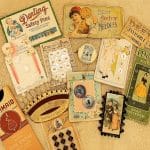

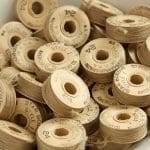
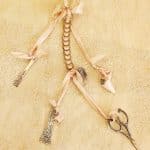

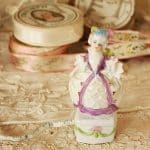
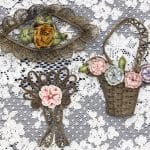
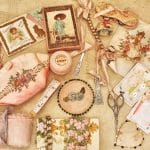
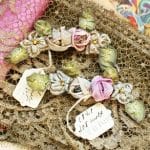
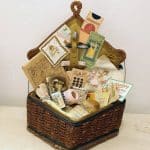

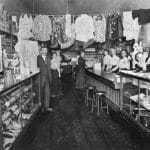



Related posts: